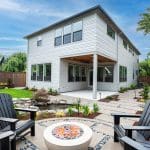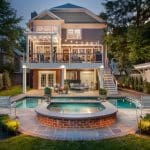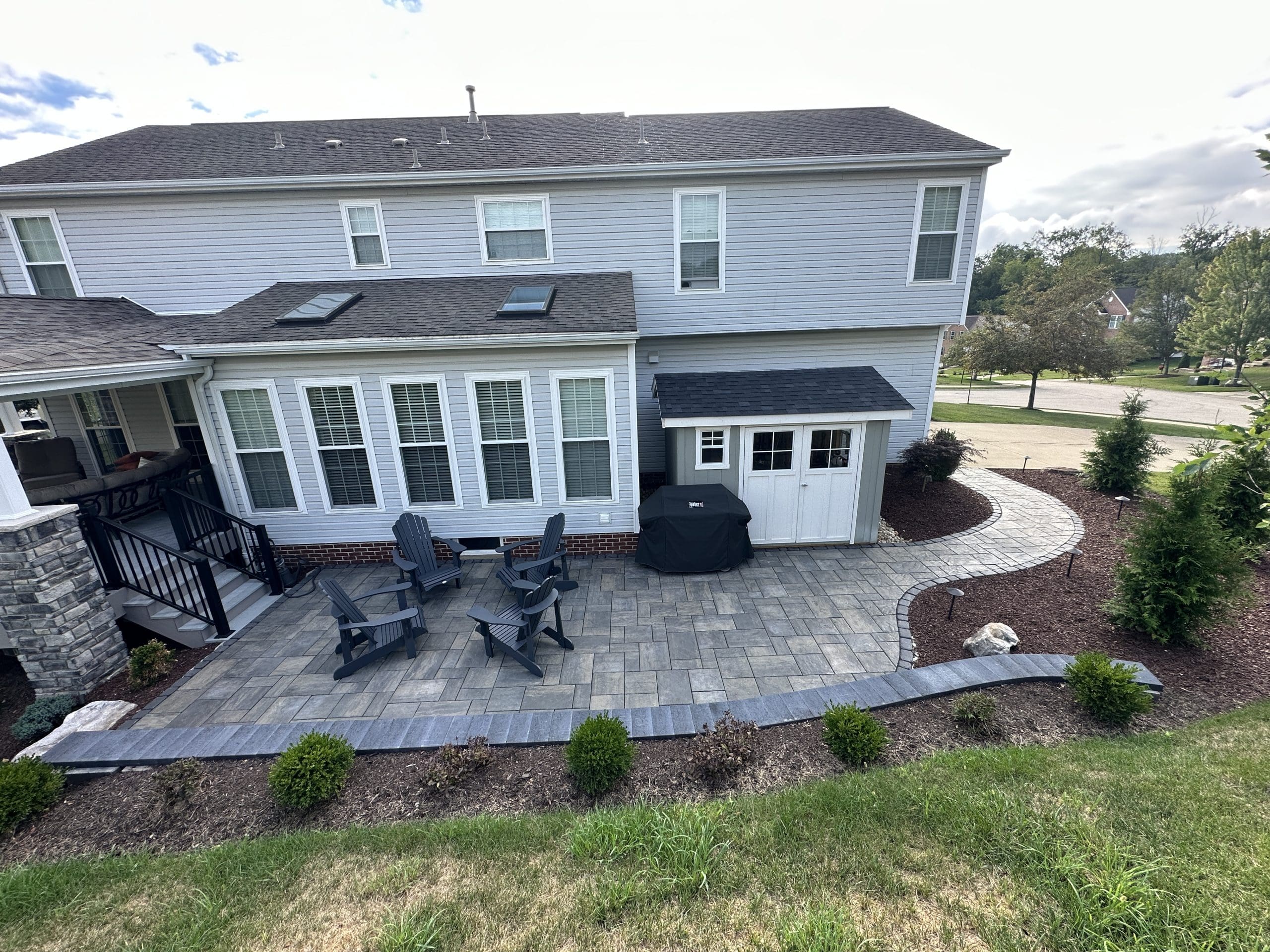
Photo: Q&A Landscaping, LLC
The desire for outdoor living spaces that serve as an additional room for homeowners is not dying down, but the hardscaping that serves as the foundation for these areas is evolving.
Although customers are scaling back the size of their hardscaping budgets moving forward, you can still close deals by offering payment plans or financing.
Trendy Paver Shapes and Colors
As housing becomes more modern in design, so are the hardscapes to match the architecture.
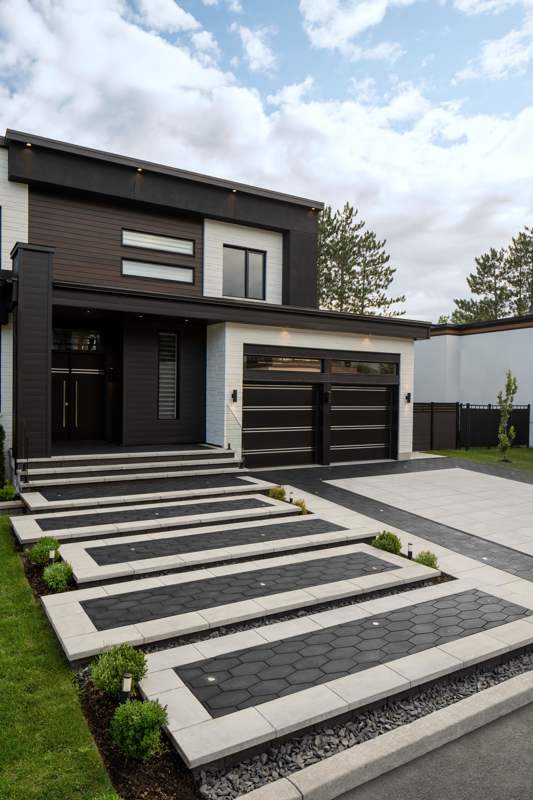
“I’m seeing some different combinations of shapes and colors,” says Quinten O’Dea, owner of Q&A Landscaping, LLC, based in Pittsburg, Pennsylvania. “Some of these brands are introducing different shapes, whether they’re hexagons or diamonds or things like that. That to me really goes hand in hand with some of these newer modern houses.”
O’Dea is curious to see if the new paver shapes will last in popularity long-term.
“I think people are always looking for something different,” he says. “Maybe something different than what their parents had, what the other older houses they’ve been to have. People who are probably paying a little more money for that modern house are also interested in extending that outside and showing off some of their tastes.”
On bigger patios, larger paver shapes have become the trend. O’Dea says he tries to avoid using the slab pavers for smaller walkways as they tend to not match the space.
Contrasting colors are also rising in popularity, such as using a light gray paver with a dark gray border to go along with customers’ white and black houses.
Patio Preferences
One trend impacting hardscapes is builders creating larger homes on smaller lots, shrinking the remaining property. O’Dea says he is installing a lot more smaller patios and typically, customers want to maximize these smaller spaces to the fullest with multiple features.
“I think as contractors are being better about showing what they can do, some people are really trying to push the limit on what it could be,” O’Dea says.
For homeowners who have larger spaces, bigger patios are still in demand, with designated areas for eating or socializing around a fire. An easy way to create a different variation to these sections of the patio is to add borders or change the pattern’s field.
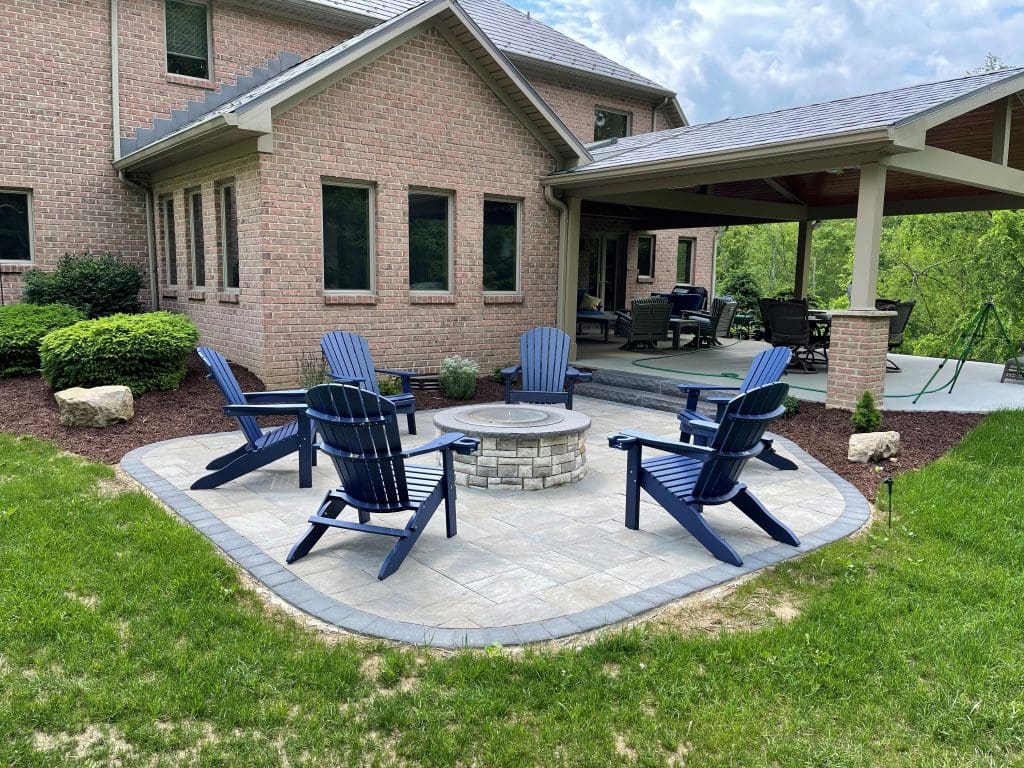
The age of the customer and their family also drives some of the design trends. Those with young kids want an open integration between the patio and lawn. These clients don’t want multiple steps down or sitting walls to box in the patio. O’Dea says that older clients are less concerned with this open flow and prefer to have multiple spaces for entertaining.
“I’ve definitely noticed an uptick of that, especially with COVID when everybody was home,” O’Dea says. “They were stuck at home for three years and those people really put a lot of effort into enjoying their outside space and inviting their friends over and creating a nice space to entertain.”
When it comes to costs, O’Dea says manmade pavers are the most affordable option. They tend to avoid using natural stone unless there’s a very specific reason behind it.
“I don’t see a lot of that anymore in somebody’s residential backyard,” O’Dea says. “I just think that if you were willing to spend 20% more on your hardscape project, you could spend that better. People would rather add another feature to it.”
Bold Boulders
Natural stone is rising in popularity in the form of boulders. It adds a timeless element to the landscape and requires no maintenance.
“Especially in these newer neighborhoods where they give you a few bushes, that’s an easy add to people’s landscape,” O’Dea says. “Any bed that doesn’t have a boulder in it on the front of your house could easily have a boulder or two on the corner.”
Boulders can also be used on slopes to act as an informal wall or border at the bottom of the slope.
Extending Fire Features
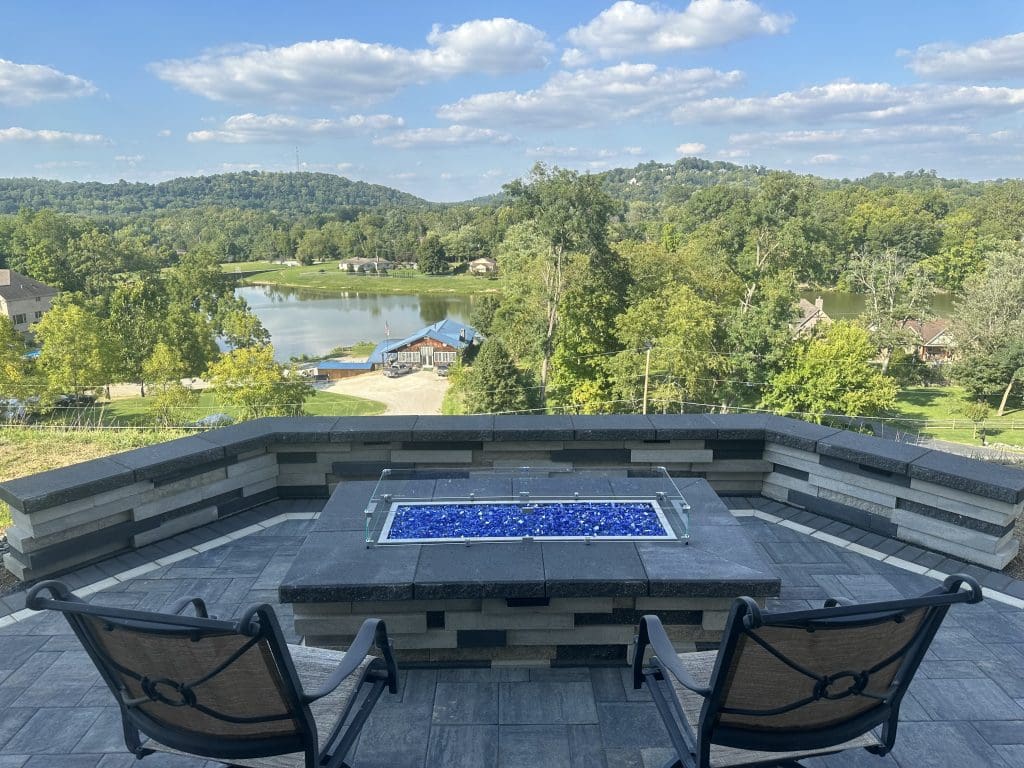
Fire features remain popular, but now customers are seeking oversized fire features. O’Dea says he’s seen more people pushing the envelope with where they can integrate fire.
He says fire tables are becoming more common, especially for commercial spaces, as it’s harder for a lot of people to gather around just one small circle.
“When you get a longer one that’s really stretched out, you can get some more burners in there,” O’Dea says. “It’s pretty impressive what these can throw off in heat. I’m seeing people start to broaden their horizons with what they could do.”
Permeable Pavers
Cities and permitting authorities are driving the demand for more permeable pavers in the landscape. Certain locations even limit the amount of non-permeable surfaces on a property with their stormwater requirements.
Often, permeable pavers are a cheaper option compared to creating a holding tank that could capture stormwater runoff from a property.
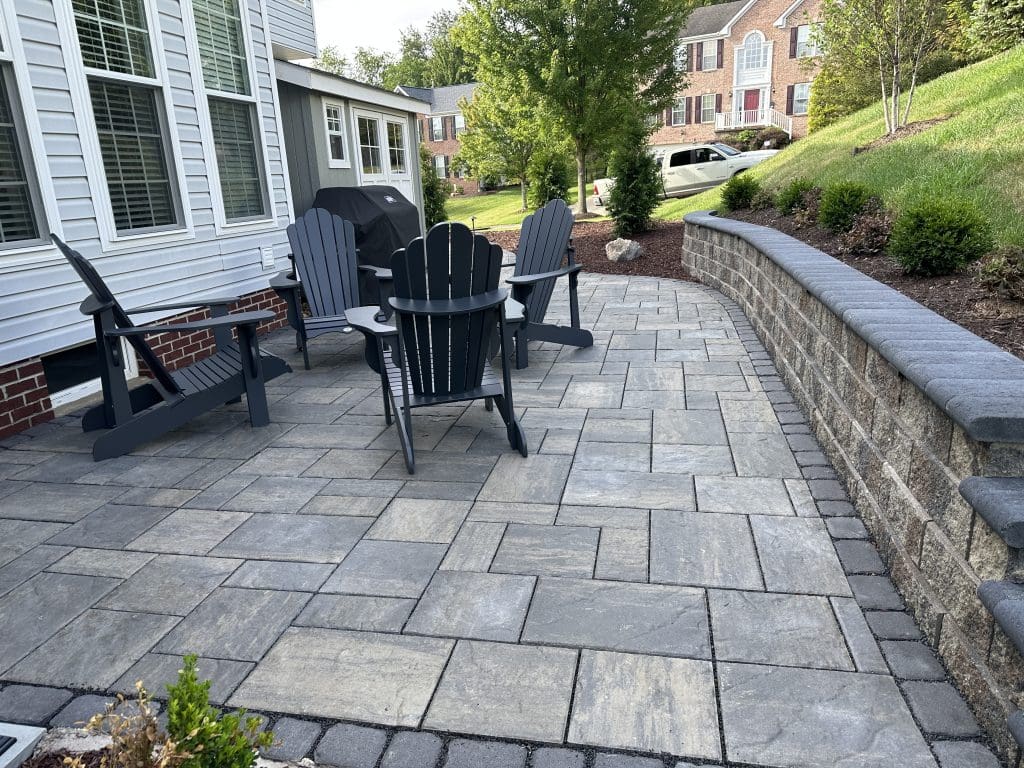
Photo: Q&A Landscaping, LLC
“I really like the permeable pavers,” O’Dea says. “I find that they are functionally very good and they give you a different look than you might not otherwise experienced.”
O’Dea has found the permeable pavers hold up better over time as they use small gravel chips between the joints instead of polymeric sand.
“I do think that’s something we’re going to see more of,” O’Dea says. “It’s just going to make sense for us to build like that. It doesn’t have a lot of costs. It has a lot of good environmental benefits.”
Declining Demands
It’s also important to be aware of what hardscape elements are no longer quite as popular. This can be partially driven by fickle customer demand but other times, it’s due to certain features not being a good fit with residences anymore.
“I have definitely seen the death of the large patios that are full of small pavers with tumbled edges,” O’Dea says. “That was very popular over the last 10 to 20 years. The tumbledness of the paver starts off looking aged. Then 10 years later, it really doesn’t look sharp.”
O’Dea adds that opting for sharp-edged pavers means there is less space for debris to accumulate in the poly sand. He has also seen a decline in brick pavers being used in designs. The exception is when working with older, more historical homes. This material is well suited for these properties.
Seating walls are becoming less popular as well, as they’re not as comfortable and functional as a piece of furniture around fire features.


